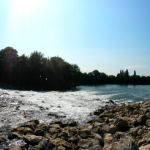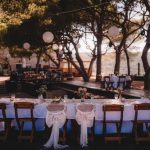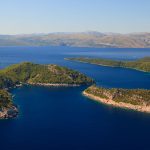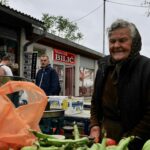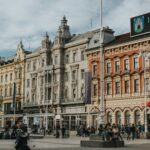Continuing our look at Croatian tourism destinations close up on June 16, 2016, TCN’s Filipa Marusic introduces us to an island which often loses out to its more glamorous neignbours, Brac and Hvar. Which is good news for those looking to escape the crowds with an island experience accessible by a short ferry ride from Split. 25 things to know about the island of Solta.
Šolta is a Dalmatian island just 9 nautical miles from Split, and it is often neglected in comparison to more mainstream islands like Hvar and Brač. Šolta is 19 kilometres long and 4,5 kilometres wide, with total surface of 58 square kilometres and is home to various bays and coves. You can reach Šolta in just 45 minutes by ferry or just 15 minutes by speedboat, and see for yourself the undiscovered beauties and enjoy different activities.
The name of the island origins from the Greek name Olyntha, meaning unripe fig and even today the locals have kept their long nurtured agricultural traditions and legends. There is a local saying “Dopala te Šolta!” meaning “I hope you end up on Šolta!” and it meant it was a bad thing if you moved to Šolta because of the hard life you would have there. Today with booming tourism on the island it seems this curse is not valid anymore.
Here is a list of 25 things to know about this charming island.
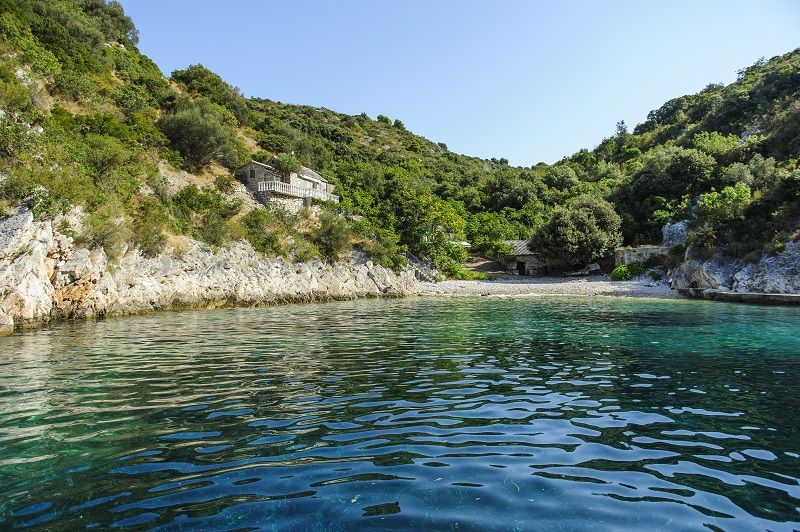
1. Legend of Queen Teuta and her fort in Senjska bay
The history of Šolta island dates back all the way to Neolithic times but the first known legends are connected to the Illyrian tribe Delmati and the queen Teuta, who according to the legend had the castle above the Senjska bay, and its ramparts can still be seen. Her castle was called Mir (Peace) and it was place where one could find inner peace and strength. There is also a theory of the queen’s hidden treasure in the area. Also locals are familiar with the legend – if fishermen would want to ask the queen something, they always needed to return the first catch of the day to the sea.
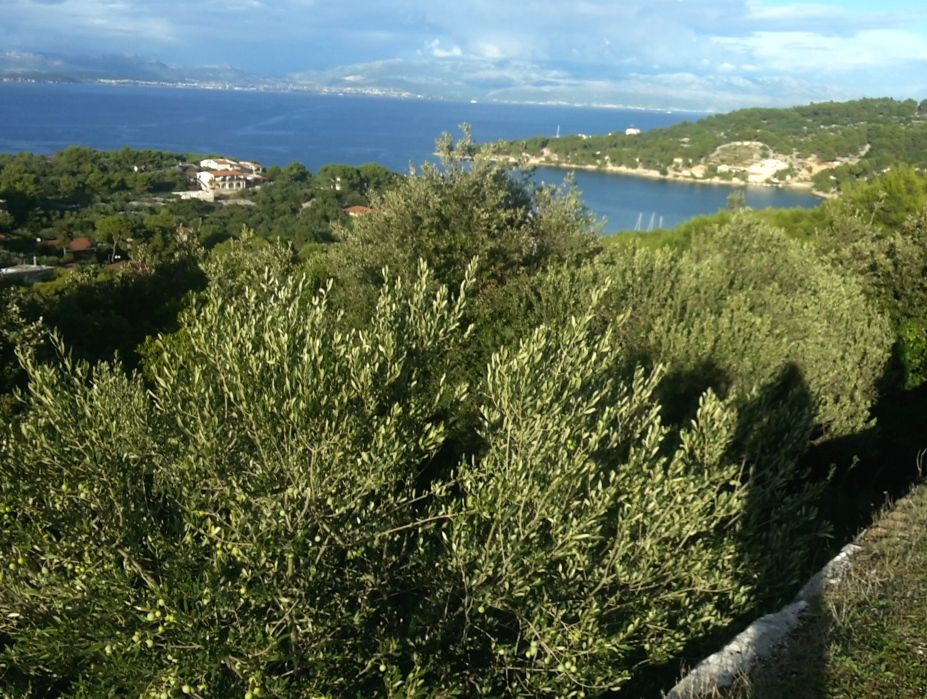
2. Olive oil making traditions – authentic Šoltanka olive tree
Šolta is an island famous for its olive trees and olive oil making traditions. The olive groves date back to the Ancient Greeks, and the Greeks are the ones who probably brought the olives from Greece. Based on several theories, wild olive trees could be found on the island even before the Greeks. The fact is Šolta has olive trees older than 1000 years. The olives are the only oily fruit which can be extracted manually without any special technology and therefore were essential part of nutrition centuries ago. The olive groves are owned by local families who dedicate their time to nurture and grow olives. Sometimes the groves are quite small and count around a dozen trees. The olive varieties that grow on Šolta are Oblica and authentic Šoltanka or Levantinka. The first does not require a lot of water while Šoltanka needs more water and fruitful soil in order to grow but gives a better crop. The harvest takes place from mid-October to the end of November. Every olive is handpicked, placed in basket and then cold processed in the olive mill. In order to have extra virgin oil, the earlier oil is processed the better the final product will be.
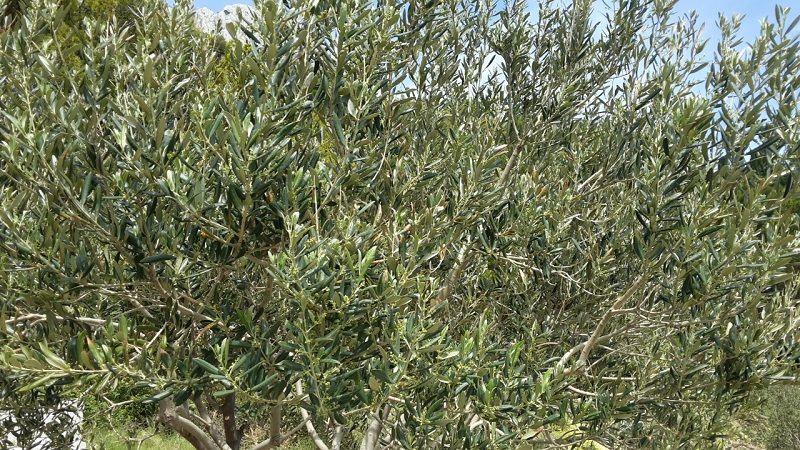
To see why Šolta olive oil is so special, visit a local olive mill and enjoy olive oil tasting.
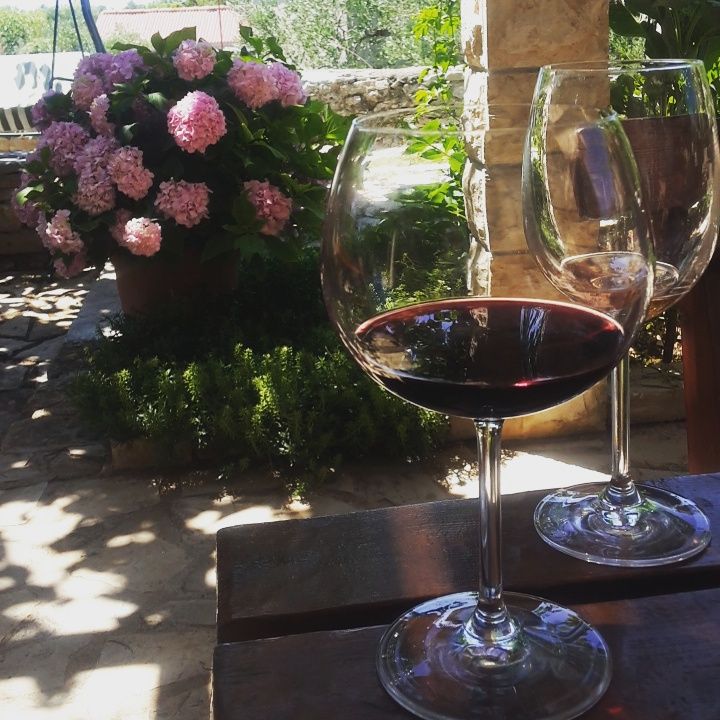
3. Wine making traditions – Indigenous wine variety – Dobričić
Šolta is home to a wine variety called Dobričić. It was almost extinct and then revitalised by passionate locals in 2005. Scientifically proven, Dobričić and Zinfandel aka Crljenak Kastelanski are parents of the most popular wine sort in Dalmatia – Plavac Mali. Dobričić is a dark red wine with a purple shine. It’s been on Šolta from ancient times. Dobričić is the main wine variety that grows on the island and is produced by local agricultural estates and vineyard owners. Locals on Šolta grow their vineyards in combination with olive groves as well as with several fig trees in order to keep the insects away. The grape harvest already starts at the end of August and stretches to mid September.
To see how the spouse of Zinfandel tastes, check out local agricultural estate that offers Dobričić wine tasting.
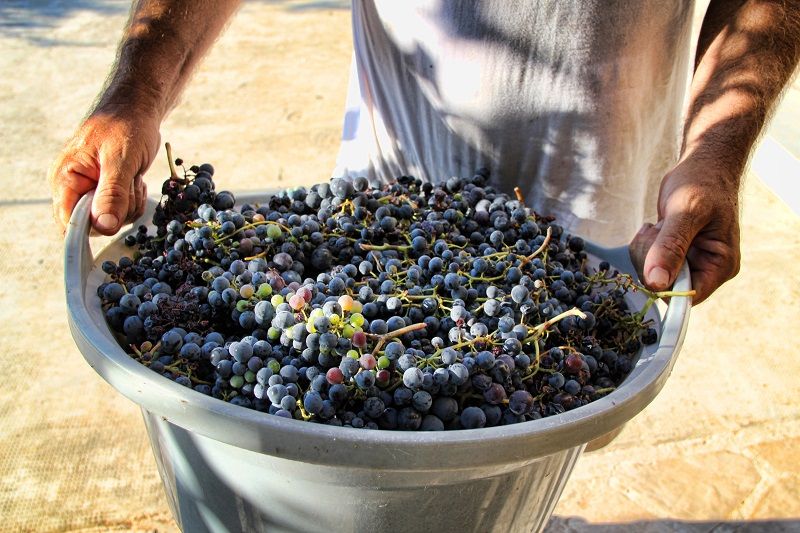
4. Honey making traditions
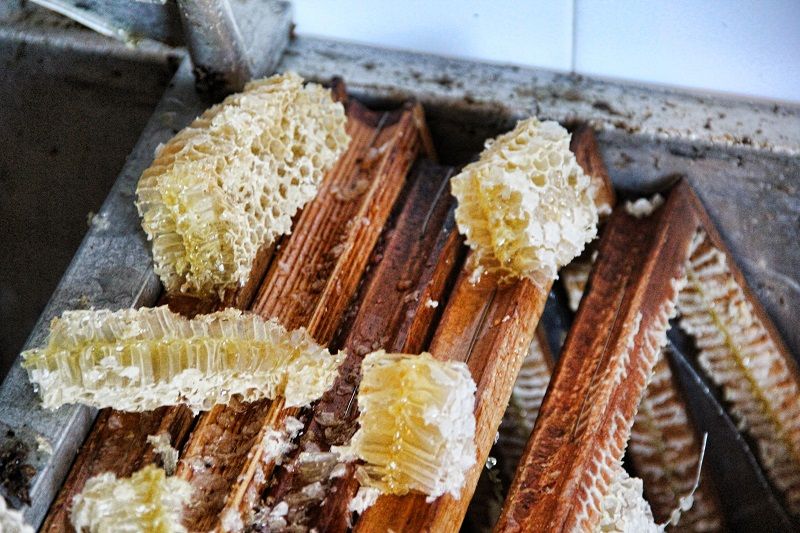
Šolta is well known for its honey, made from wild rosemary. Locally it is called Olintio and it has been in use since ancient times. There is written evidence about honey from Šolta and its healing attributes from the same period. Along with wine and olive oil making, beekeeping and honey production is one of the oldest traditions of the island. The beekeeping cooperative was founded in 1875 and even the French had a special committee working on evaluating the honey. The French, as well as the Italians, pronounced Šolta honey one of the best in the world. Nowadays there are several beekeepers and one of them offers workshops and honey extracting process presented to the public.
To see the honey extracting process, visit local beekeepers farm.
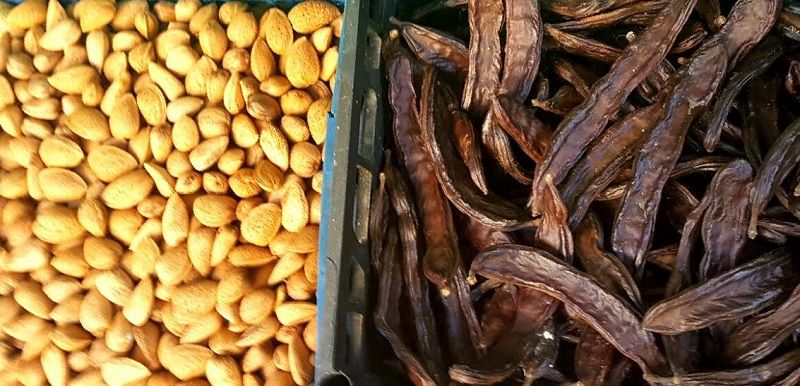
5. Šolta Gingerbread
Aromatic gingerbread cake has different variations and it can be often found on different Dalmatian islands. On Šolta, this tradition has existed for 500 years. The tradition of gingerbread making originates from women who prepared it for their sailor husbands who brought back home exotic spices required for flavouring the gingerbread. Gingerbread had the purpose of predicting weather conditions, or so they believed – when crispy the weather will be sunny while when tender the weather is rainy. The ingredients used in making of gingerbread are local ecological products like honey, extra virgin olive oil, carob and sherry.
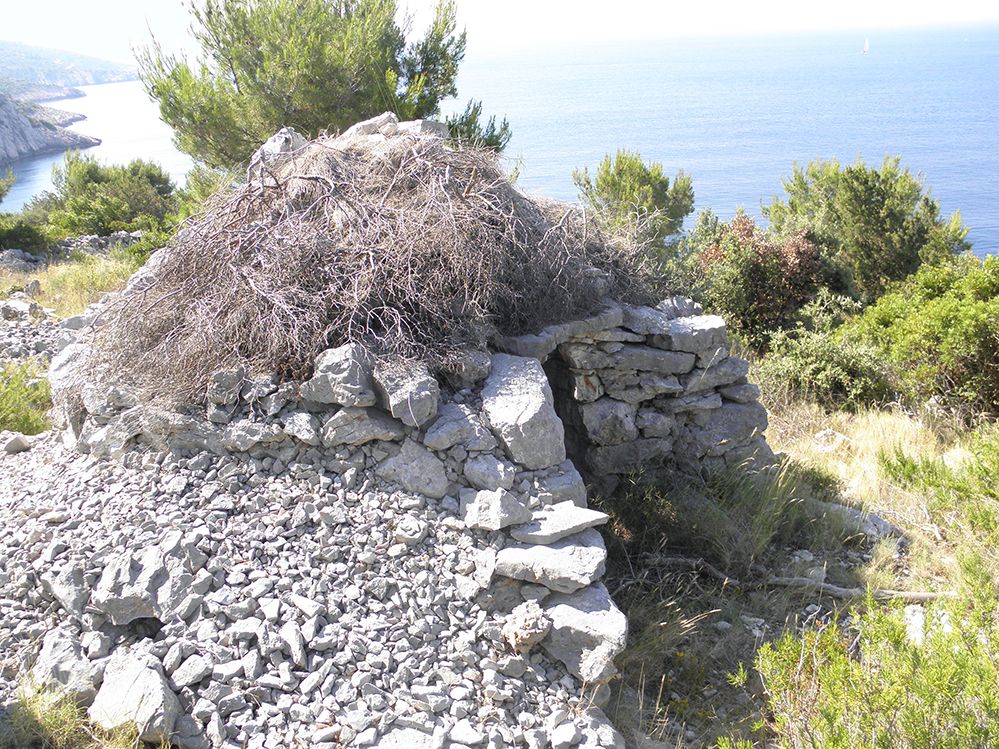
(Photo credit – Dragodid)
6. Bunje
Bunje is the name for common buildings on Dalmatian islands. These authentic houses are located on the islands in areas where local inhabitants had or still have their fields. In the past they were used as shelter from the rain but also as a place to keep their tools. Bunje are examples of dry wall construction on Dalmatian islands. According to some research, they are primitive settlements of the inhabitants from prehistory which can be proven by the fact there are similar buildings all over the world. Learn more with this very cool map.
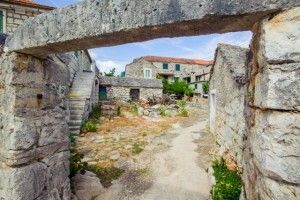
7. Villae rusticae
Roman heritage can be seen on Šolta with several ville rusticae in coastal and inland towns and villages. Villa rustica presents a Roman countryside villa and usually had its own agricultural estate. It had three different parts – the main house where the landlord lived, the agricultural center and the farming area. These villas can be found in Donje and Gornje Selo and in Nečujam close to the Piškera or Diocletians fishpond.
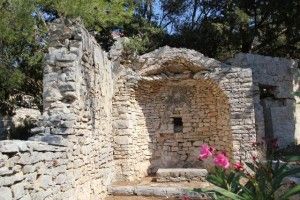
8. Piškera – Diocletian’s fishpond
The story says that Emperor Diocletian had his very own fishpond built in 295 BC in the smallest bay in Nečujam. In addition to the fishpond there were thermal sources which the emperor used for swimming. In Diocletian’s time Split was approximately 7 hours rowing away. The remains of the Roman wall can still be seen under the sea. The name of Nečujam bay origins from the Roman word Vallis surda or deaf bay which is the literal translation of word “Nečujam” and it presents realistic a description of the bay in the sense that it is impossible to hear any sound.
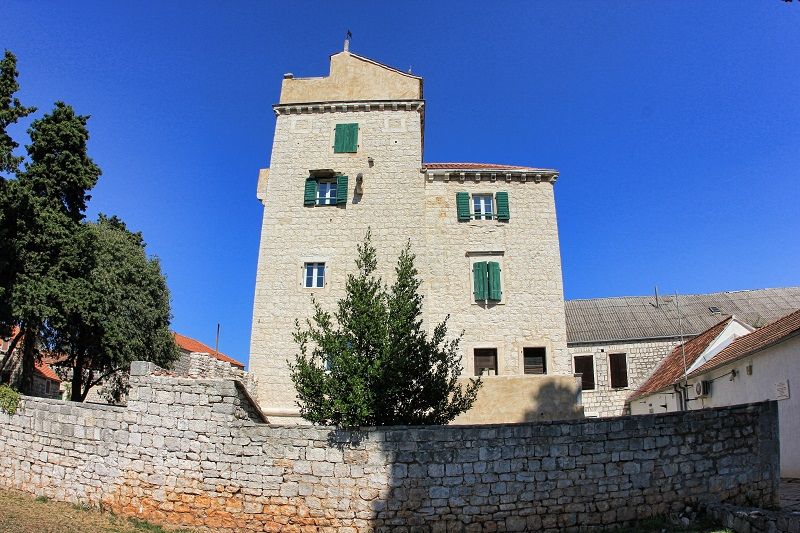
9. Slavića kaštel (Grohote)
Slavića kaštel (castle) is located in Grohote and represents the administrative centre of Šolta. Slavića castle was owned by old Split noble family Slavić (previously De Benedettis and Vitturi) and is today a protected heritage. There aren’t any historical data on the construction of the castle but research showed it developed during three different phases. At first it was a three-storey tower, which was developed to the four-storey tower and it was build mainly for protection from attack. Finally, in the 19th century after the decrline of pirate attacks, it was used as a residential house. Nowadays it is used as the main office for Šolta Municipality and courtyard is often used as stage for different cultural events.
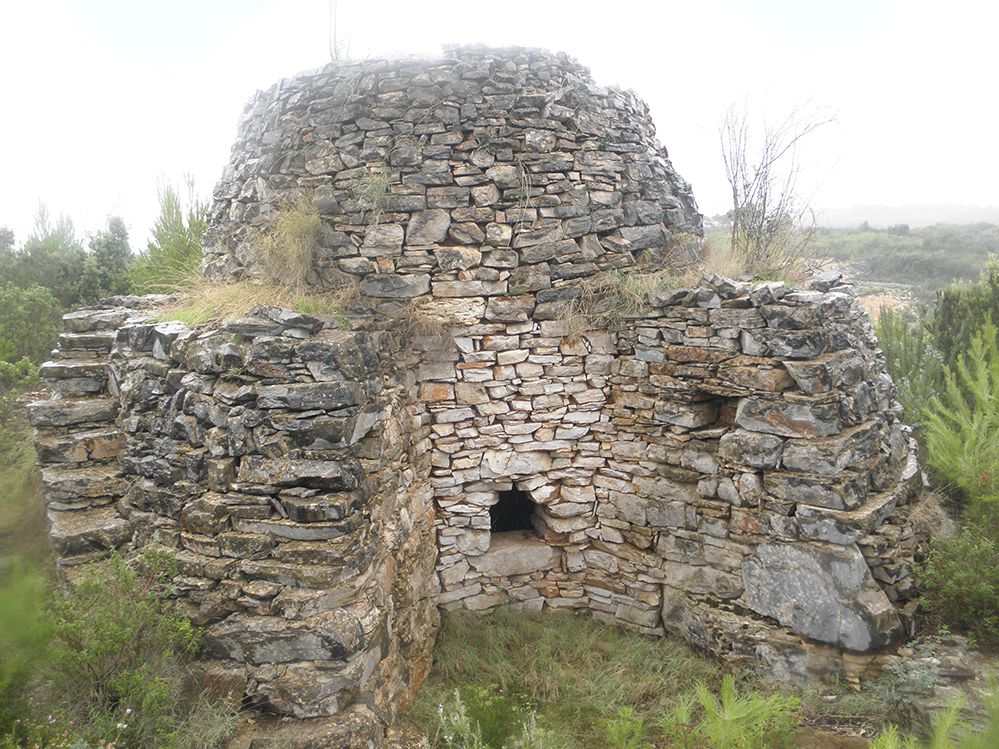
(Photo credit – Dragodid)
10. Japjenice and limestone production
Šolta is an island with more than 600 traditional limestone houses. There is even a special way of building these settlements named after the island. In the past, Šolta was one of the main centres for lime production and these little houses were used as micro factories. Locals can even nowadays describe the lime production process and the use of Japjenice. Do not mistake them for bunje but note Šolta has both of them hidden throughout the countryside.
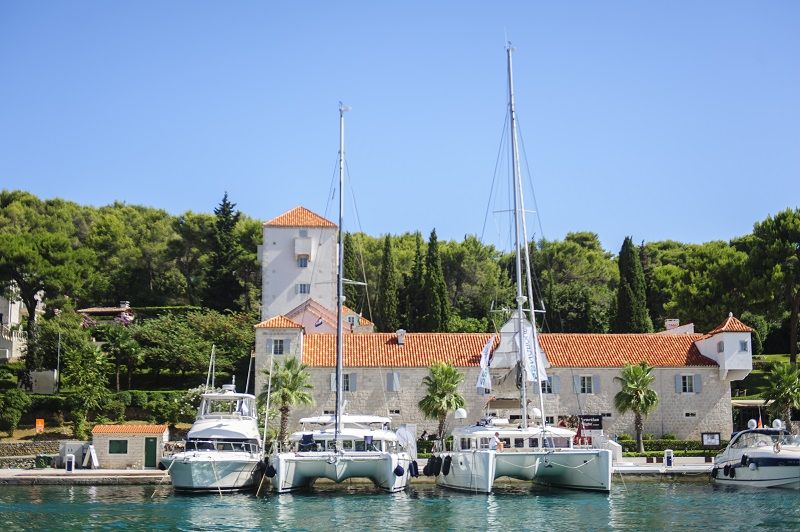
11. Martinis Marchi castle
The history of Martinis Marchi castle dates back to 1703 when the three Marchi brothers got permission from the Venetian authorities to build a tower, a village and a church above the bay of Maslinica. During that time pirate attacks were common and there was a need to build the stronghold. After the building of the castle, different peasant houses were built and finally the port was built in 19th century. Nowadays the castle is a heritage hotel and the brand Martinis Marchi is used for the marina and restaurant in Maslinica.
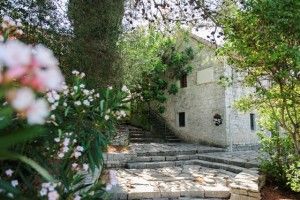
12. The house of Marko Marulic in Nečujam
Nečujam is little coastal town on Šolta famous for its biggest and longest beach on the island and its long bay which is actually range of several bays well known in Roman times. Six centuries before huge tourism boom, Nečujam was place of inspiration for famous Croatian writer and poet – Marko Marulić – the father of Croatian literature. Story says he spent time here and created some of his greatest works. He would probably stay there longer if it weren’t for pirates’ attacks. Another famous poet Petar Hektorović spent his time here too. This proves Nećujam was always place of inspiration for the artists as it is today a host to different literature and art workshops.
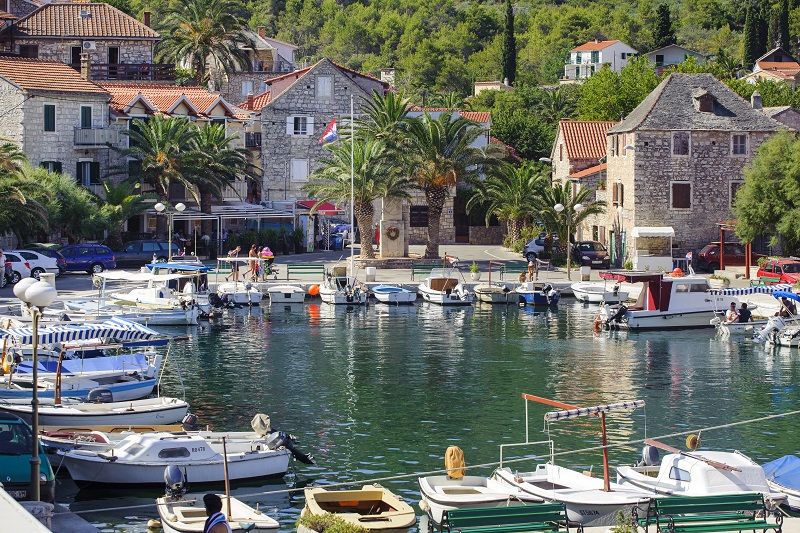
13. Stomorska and shipbuilding traditions
Stomorska is a small fishermen town and the first inhabited coastal town on Šolta. Stomorska was inhabited in the 17th century and had its small shipyard founded by the Bučić family which was from Hvar. Stomorska was previously the main port for the people of Gornje Selo and town of royal Cindro family. The locals were usually either fishermen or skilled sailors who owned sailing boats to transport food and lime. The sailing traditions are now presented just as tourist attractions and old sailing boats are used for tourist cruises.
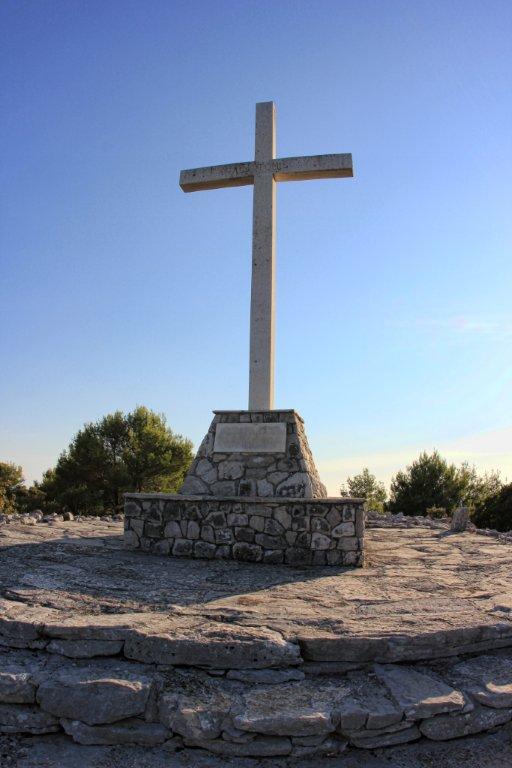
14. Vela straža
The highest point of Šolta island is Vela straža where you can go hiking to the 237 m high peak and enjoy the view on the surrounding islands. From here you can see the view of Split and surrounding mountains.
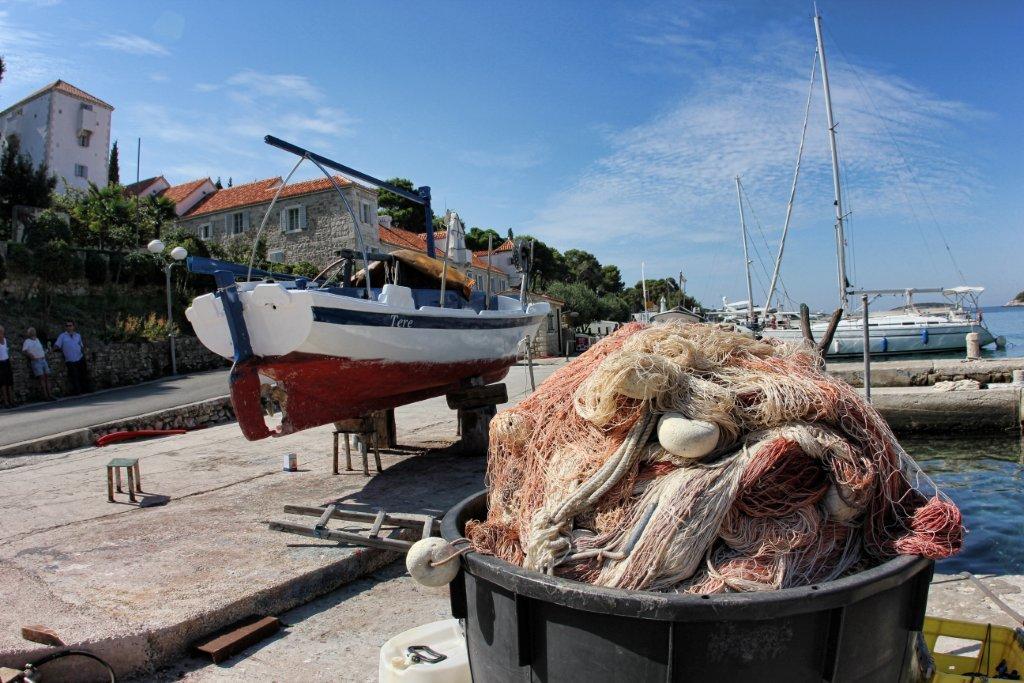
15. Hunting destination
Even though it is best known as a sun and sea destination with developing gastro and cultural tourism, Šolta is off season better known as a good place to hunt. Šolta is often visited by hunters during the hunting periods. They are looking for prey in selected areas throughout the whole island and the majority of animals caught are pheasants, rabbits and wild boars.
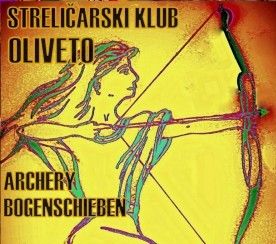
16. Medieval archery
You can enjoy medieval archery course in Maslinica at Oliveto archery club. This interesting sport will show you a great combination of old traditions and sport.
The archery club offers a range of medieval arms and modern archery. The trainer and the members of the club will teach you how to use a bow and arrow and make your stay on Šolta even more memorable. The club is located in the pine tree forest in Maslinica and is a great way to spend active holiday.
17. Lovely bike destination
Bike routes on Šolta lead from Maslinica to Stomorska on the alternative tarmac road. This is actually a mountain bike route and it goes via Donje Selo, Srednje Selo and Grohote with detour to Nečujam (Piškera bay) and finally end in Stomorska. This route is perfect for bike ride along olive tree groves and dry stone fields (and numerous japjenice) overlooking the sea.
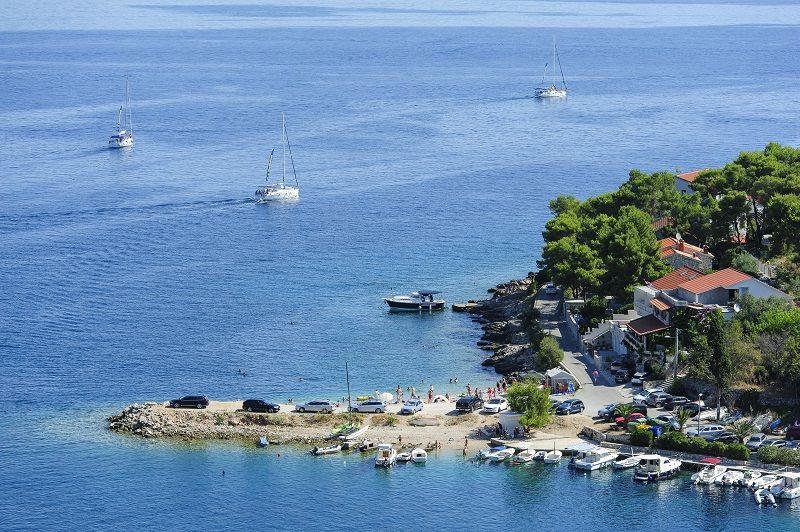
18. Diving destination
Šolta island along with the beaches and bays, offers some quite interesting diving locations where one can explore spectacular sea life and even various artefacts from ancient times, such as shipwrecks and an original Roman wall. The most popular diving destinations are Livka, Stračinska, Senjska and Jorja bay. On all four locations you can find gorgonians and coral reefs while diving. In addition, Jorja and Senjska have underwater caves. On several different locations – next to Mrduja islet, Stomorska and Maslinica islets, you can find a shipwreck; while the Roman wall is hidden in Piškera (see no.8, above).
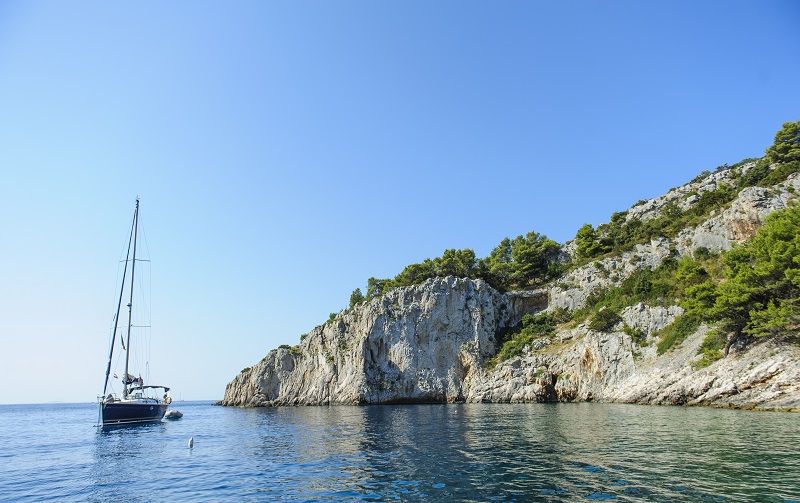
19. Sailing paradise
With the marinas in Rogač, Stomorska and Maslinica you can choose your starting point to explore the island and continue your sailing towards other Croatian islands. Even though it is not on the mainstream sailing map, Šolta is proud of its 24 bays which one can have a great time exploring. Sailing is even more attractive if you have in mind the fact the most beautiful beaches and bays can be only reached by boat.
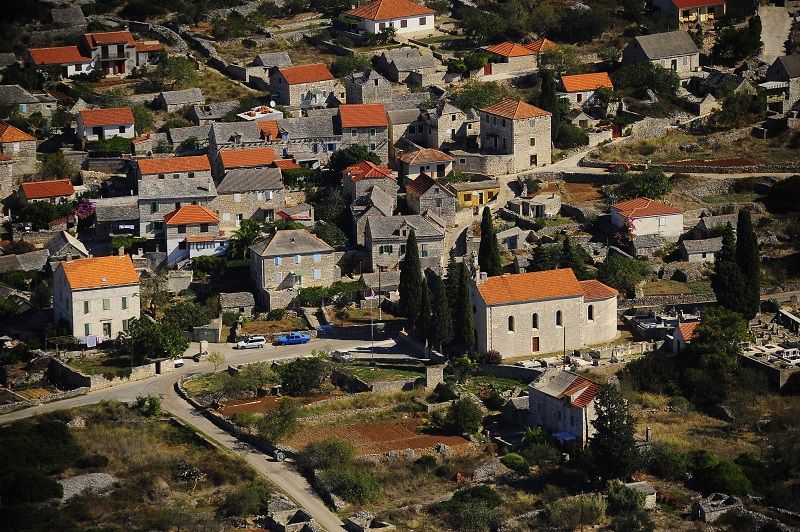
20. Home of the Cuvita owl
The Čuvita owl represents a true symbol of Šolta island – it is a species that can be found on Šolta island and is often a motif on different souvenirs. Čuvita is actually a small owl and the people of Šolta are called Čuvitari. Previously it was a name for the locals when somebody tried to make fun of them, but nowadays it is symbolof pride and almost a trademark for the island.
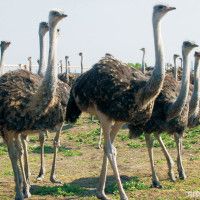
21. Ostrich farm
Even though the ostrich is a bird native to Africa, you can find whole farm on Šolta near Gornje selo. Go to the estate and see how well ostriches have adapted to life on the island. This can be a good stop on your bike route. The farm is located in village Gornje Selo which is proud of its numerous agricultural estates well used in tourism purposes that range this unique farm to the olive oil and wine tasting.
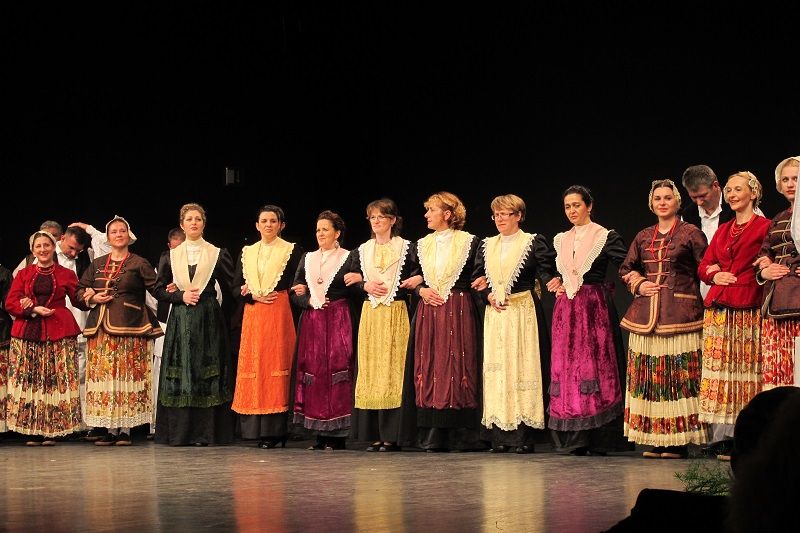
22. Klapa festival in Donje selo
Klapa is well known a capella singing protected by UNESCO, and Donje Selo village is the host to the annual klapa festival. This festival takes place every summer and hosts different Dalmatian klapa singers from Split, Kaštela, Trogir, Brač and Korčula. The locals are especially proud of their female klapa called Čuvite. This event attracts a wide audiene to enjoy the authentic music. This year is the 10th year of this event.
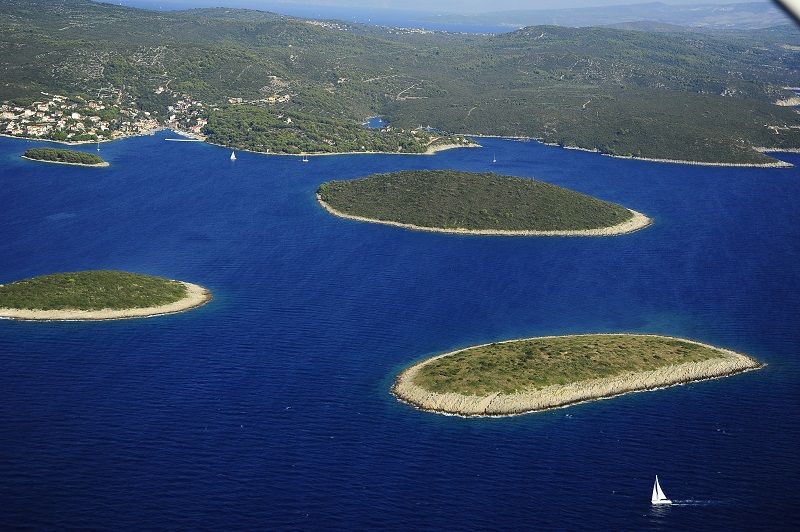
23. Seven islands in front of Maslinica with the best sunset
These seven islands present main members of Šolta archipelago and are other included in different boat tours. They are often visited during sailing but also can be explored by kayaks and during diving. The names of the seven islands are Balkun, Rudula, Grmej, Stipanska, Saskinja, Polebrnjak i Kamičić. On the island Stipanska there are ramparts of an early Christian church built in the 5th century which proves even these small islands were inhabited at some point in the past. One of the greatest attractions is definitely the sunset – this tourist hotspot will give you a magical experience of the sun setting over seven islands in front of the bay.
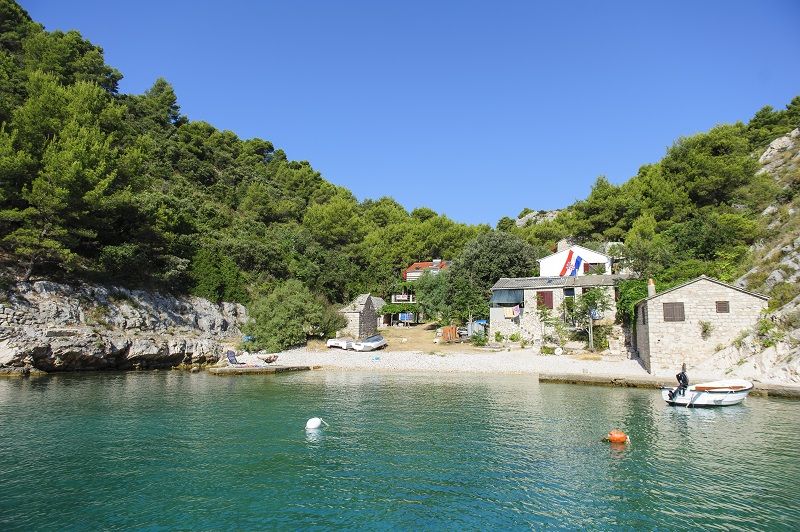
24. Various Bays and Hidden Beaches
Šolta is full of bays and breathtaking beaches which are great locations for swimming. The best bays are located on the southern side of the island and you can reach them by boat only. If you’re not exploring the bays while sailing, you can reach them on walking paths which take approx. 40 minutes walk. All the beaches are pebble stone beaches and there aren’t any sandy beaches on the island. Bays like Stračinska, Tatinja, Senjska are waiting to be explored and are a great place for swimming and sailing.
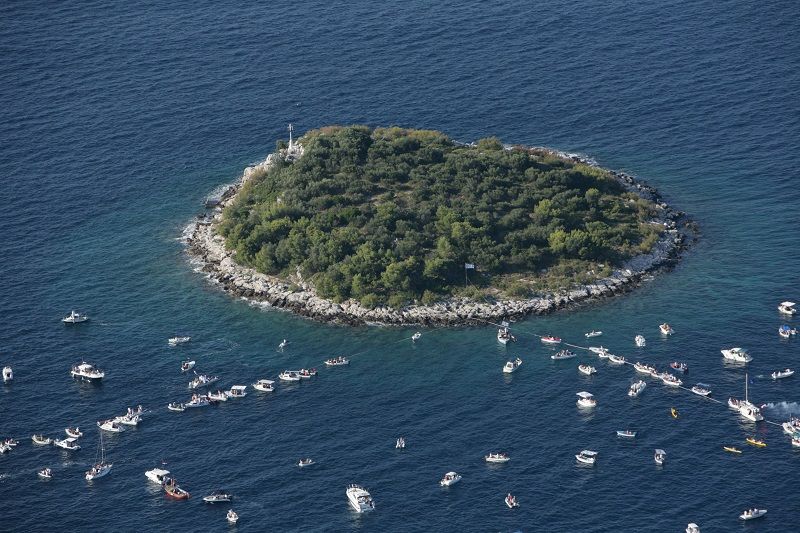
25. Tugging of Mrduja
This event stands for a silent war between two neighbouring islands Šolta and Brač. They are only 800 m away but a years-long dispute about the tiny islet of Mrduja is the reason for this event – to determine who does it belong to. Sadly for Šolta it does administratively belong to Brač but each year both Šolta and Brač fight over it. The story says the islanders couldn’t decide who the island belongs to and that is the reason why they tied a rope and pulled Mrduja from one side to another. This annual event is called “Tugging of Mrduja”. It is followed by different events, live music and folk feasts both on Brač and Šolta. The central event is held during afternoon where the boats from both islands gather around Mrduja, tie the ropes and are trying to pull the island towards them. The winner is the side which pulls the rope (and the island) more towards them. This event started to take place from 2008. and is traditionally held every year during last weekend in July. Check the Mrduja tugging in video here:
Šolta – the Return to Innocence


